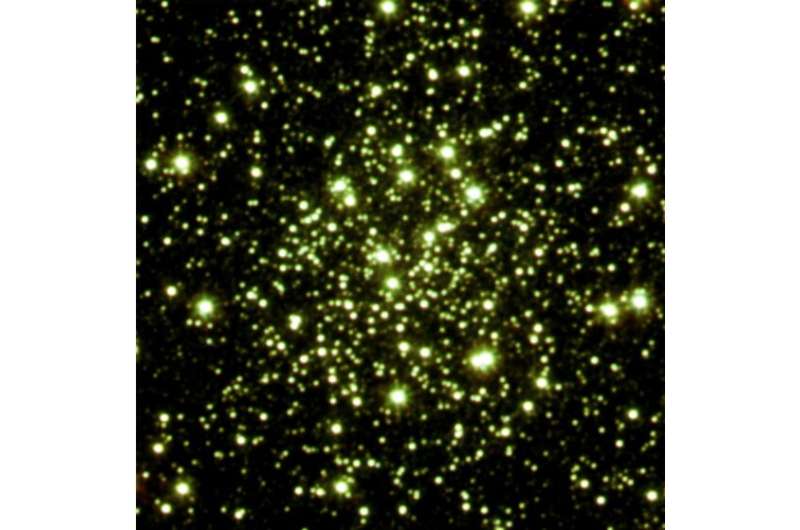Color image from the VVV survey for Pal 6. Credit: Souza et al., 2021.
An international team of astronomers has conducted a detailed study of a globular cluster known as Palomar 6 (or Pal 6 for short). Results of the research could help us better understand the nature of this cluster. The study was detailed in a paper published September 9 on arXiv.org.
Globular clusters (GCs) are collections of tightly bound stars orbiting galaxies. Astronomers perceive them as natural laboratories enabling studies on the evolution of stars and galaxies. In particular, globular clusters could help researchers better understand the formation history and evolution of early type galaxies, as the origin of GCs seems to be closely linked to periods of intense star formation.
Palomar 6 is a globular cluster in the constellation Ophiuchus, projected toward the galactic bulge. It is one of only a few GCs known to contain a planetary nebula. Although several studies of Pal 6 have been conducted, there are still some uncertainties regarding the parameters of this cluster, like its distance, age or metallicity.
To resolve these uncertainties, a group of astronomers led by Stefano Souza of the University of São Paulo in Brazil, has performed a photo-chemo-dynamical analysis of Pal 6. As part of the study, the researchers analyzed the high-resolution spectra obtained with the FLAMES-UVES spectrograph at ESO's Very Large Telescope (VLT) and photometric data from the Hubble Space Telescope (HST).
"We present a complete and detailed analysis of the poorly understood GC, Pal 6, through the analysis of high-resolution spectra of the UVES spectrograph, HST photometry, and a dynamical analysis," the astronomers wrote in the paper.
The researchers investigated a sample of six stars, out of which four turned out to be members of Pal 6. Based on this, they found that the cluster has a mean radial velocity of 174.3 km/s and a mean metallicity at a level of -1.1.
Furthermore, the chemical analysis of Pal 6 shows that it has an alpha-element enhancement of about 0.35. The abundances of both first- and second-peak heavy elements were found to be relatively high—0.4-0.6 and 0.4-0.5, respectively. The analysis also indicates that the europium element is enhanced, while silicon, calcium and titanium showcase in general low enhancement.
According to the study, one member star of Pal 6 exhibits enhancements in nitrogen and aluminum (about 0.3). The astronomers noted that this result suggests the presence of a second stellar population in this cluster.
The research found that Pal 6 is some 12.4 billion years old and is located about 25,000 light years away from the Earth. Additionally, the orbital analysis indicates that the cluster is confined within the galactic bulge and was probably formed in the main-bulge progenitor.
"The present analysis indicates that the globular cluster Pal 6 is located in the bulge volume and that it was probably formed in bulge in the early stages of the Milky Way formation," the authors of the paper concluded.
More information: Stefano O. Souza et al, Photo-chemo-dynamical analysis and the origin of the bulge globular cluster, Palomar 6. arXiv:2109.04483v1 [astro-ph.GA], arxiv.org/abs/2109.04483
© 2021 Science X Network
























